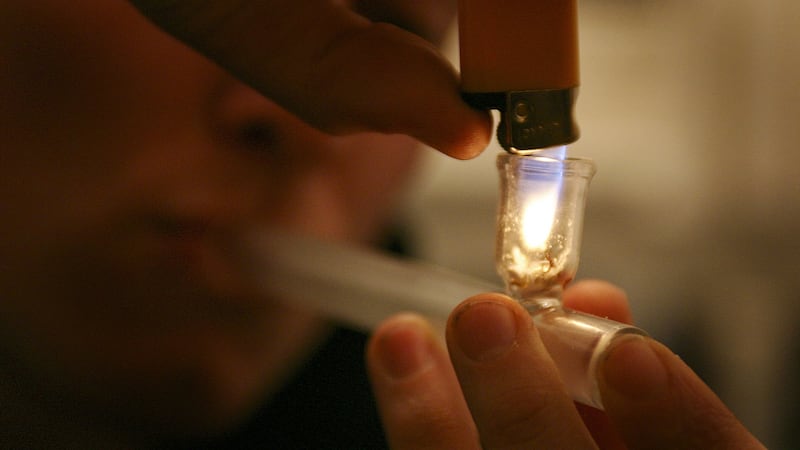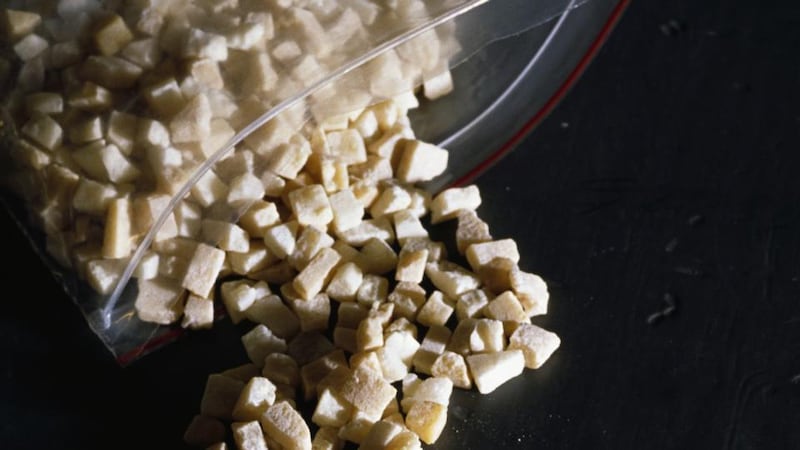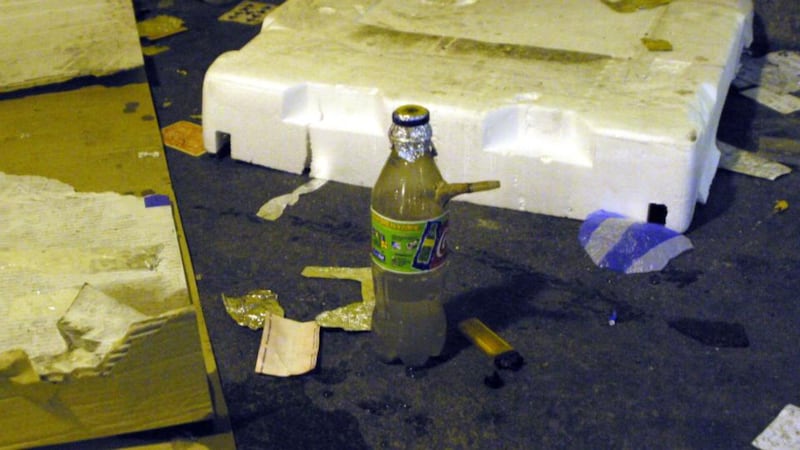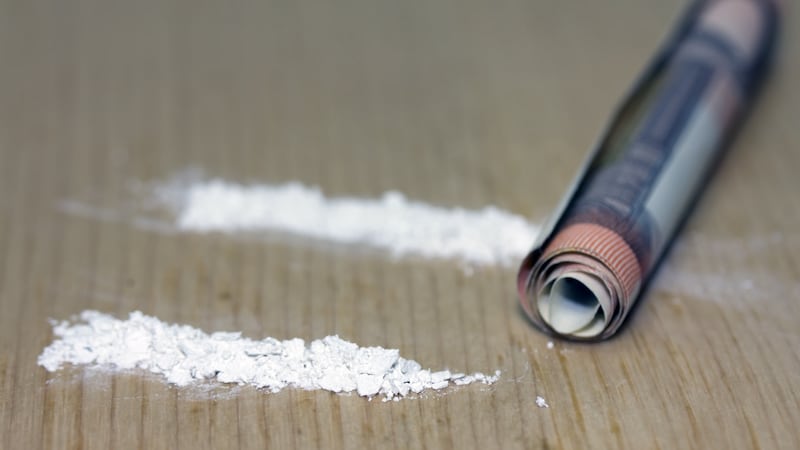He was known as Rock One because he sold the best crack. The second best was sold by Rock Two, the third by Rock Three and so on. They were part of a group of about 15 dealers serving the burgeoning crack market in north inner-city Dublin in the middle of the last decade.
The men were extremely careful; few other dealers knew their real names. They sold only to people they knew or who were introduced to them through a trusted source.
They had good cause to be concerned. Minister for Justice Michael McDowell, fearing the start of a crack epidemic similar to the one that had ravaged American inner cities in the 1980s, had signalled that this was a priority area. Undercover gardaí were posted around Moore Street and Parnell Street to spot dealers.

Most of the dealers were west Africans who sold prepared rocks. One rock, about half the size of a thumbnail, cost €50 and would yield about four hits.

Crack cocaine is made by mixing powdered cocaine with ammonia or baking soda, then boiling and cooling the result, which is then divided into chunks that are smoked for a very short but intense high. Crack is far more addictive than standard cocaine.
In the 2000s some users cooked their own crack, but the poor quality of Irish cocaine meant they often ended up with an unsmokable mush
In the 2000s some users cooked their own crack, but the poor quality of Irish cocaine meant they often ended up with an unsmokable mush. The African dealers were seen to be more skilled at the process, so most users were happy to buy it precooked from them.
By 2008 the dealers were moving outside the city centre and into the suburbs and commuter towns. Irish dealers had also become involved in the trade. Gardaí and drug workers braced for an explosion in crack use. It continued to grow, but not by much. The recession had bitten, and people could no longer afford cocaine, the parent drug of crack. Supply stagnated.
Traditional drugs such as heroin and cheap, locally grown cannabis dominated the illegal drug trade during those years, and the crack-cocaine epidemic never materialised.
__________
In mid-November 2016 health workers were examining chest X-rays of homeless people in Dublin when they noticed something unusual: many of the patients had scarring on the insides of their lungs.
The X-rays were to check for tuberculosis, a disease that is now rare but can still affect rough sleepers. But tuberculosis hadn’t caused the scarring. The cause was crack cocaine, which many of the patients said they had recently started smoking.
The results illustrated what many drug workers have been saying in recent years: that crack is becoming a major problem in Ireland and that the authorities are ill equipped to deal with it.
A lot of people are turning up looking very emaciated. You don't even need to test these patients; you can nearly see from afar that they have a problem
"It's very, very noticeable. A lot of people are turning up looking very emaciated. You don't even need to test these patients; you can nearly see from afar that they have a problem," says Dr Garrett McGovern, who runs a private drug-treatment practice in Dublin.
Tony Duffin of the Ana Liffey Drug Project says the trend is most obvious when looking at Dublin's drug litter. "We're seeing more and more crack pipes discarded around the city centre and in parks," he says.

The pipes, which are usually nothing more than tinfoil on top of an empty soft-drink bottle, are now a common sight alongside the discarded needles in Dublin alleyways, he says.
Official figures show crack use has been increasingly sharply in recent years, although it still remains low compared with the use of other drugs.
In 2003, 0.3 per cent of people surveyed by the National Advisory Committee on Drugs and Alcohol had used crack. In 2011 that figure had doubled, to 0.6 per cent. In 2015, the most recent year for which figures are available, it had nearly doubled again, to 1.1 per cent.

In line with the economic recovery, the use of standard cocaine is also on the rise, although more slowly.
"Cocaine has always been one of those reliable indicators of economic prosperity. If you go back to the Roaring Twenties, champagne and cocaine were as reliable as the consumer price index," Dr Chris Luke, an addiction specialist in Cork, says.
He is seeing “a gentle uptake” in cocaine use since the economic recovery. Others in the area have reported the same trend among the middle classes. But with crack it’s mostly, although not exclusively, the most disadvantaged who are affected.
“We’re talking about people who are polydrug users” – which is to say they take a combination of psychoactive substances – “who may have psychological and mental-health problems. They may have physical-health problems, they may be homeless or with a tenuous housing situation. It’s that group of people who are extremely vulnerable,” says Duffin.
McGovern agrees. “There’s a huge problem with crack cocaine among the more socially disadvantaged. These are people that would consume a large amount of it during the course of the day, to the point that there’s very little else going on in their life. It’s not like cocaine; it’s not a party drug. A lot of it is taken to deal with depression, poverty and all sorts of things like that.”
That doesn’t mean the middle classes don’t use crack. It just tends to affect them less from an economic and social point of view.
Middle-class people would take crack in their car before they come home. They would keep it away from their wife or partner or family
“I have treated people from middle-class backgrounds,” McGovern says. “They wouldn’t take it in a social context; a lot of them would take it in their car before they come home. They would keep it away from their wife or partner or family.”
Crack is also sold in a different way from other drugs. According to three gardaí who spoke to The Irish Times, crack dealers tend to be more professional than heroin dealers. They usually don't smoke it themselves, for example, although some might use other drugs.
Many also manipulate customers into buying crack. If someone asks to buy heroin, they may claim there is a drought and offer them crack instead, in the hope of getting them hooked, one garda says.
Crack and heroin go hand in hand. Many heroin users who have been stable on methadone maintenance therapy for years will turn to crack to break the monotony. Although methadone therapy “is valued by those users who remember very bad times from their lives ‘on gear’, those on methadone miss aspects of this earlier life”, a 2010 Irish study noted.
Methadone blocks heroin highs. So users often need to seek something to replace that high, even just occasionally. “Within the context of unvarying daily and weekly cycles, this experience can be imbued with an almost ritual importance, literally the high point of a week, satisfying embodied needs for pleasure and for sociality,” the study says.
__________
According to Duffin, there’s no such thing as a crack addict or a heroin addict any more. Almost every user is a polydrug user. “Nobody just smokes crack, really. It’s crack and heroin, or crack and methadone or benzodiazepines. People are using multiples of these.”
We're seeing lots of people being forced to hold on to large amounts of drugs in exchange for reducing their drug debt. It's these people who get caught and face years in jail
Crack’s addictiveness means many users are also getting into debt with their dealers, leading to beatings or worse. “We’re seeing lots of people being forced to hold on to large amounts of drugs in exchange for reducing their drug debt. It’s these people who get caught and face years in jail,” a member of the Garda’s national drugs and organised-crime bureau says.
“There’s crime, there’s debt, there’s dealers looking for these people,” says McGovern. “It’s very ugly.”
Big seizures of cocaine and, by extension, crack had decreased significantly in recent years. It is unclear if less is coming in or if dealers are getting better at evading capture, but crack has been cropping up frequently in courtrooms in more indirect ways.
“In terms of robbery and burglary it’s becoming a major motivational factor,” says one criminal-defence barrister. “I used to put forward clients’ chronic heroin addictions as the main mitigating factor. Now more often it’s crack and heroin, or crack and pills.”
Crack also presents its own treatment problems. Unlike heroin, it’s mentally but not physically addictive, meaning that treatment has to be psychologically focused. This is far more costly in time and money than just giving an addict a methadone prescription.
There are little community groups who are trying to do their best, but really the HSE have not invested in treatment for crack cocaine
“It’s really about talking therapy, and that takes time,” says McGovern. “There’s no investment in this area. There are pockets of little community groups who are trying to do their best in the circumstances, but really the HSE have not invested in treatment for crack cocaine. We’re not really managing this problem well in clinics.”
So why is crack suddenly becoming popular in Ireland after so many years? The reason is not entirely clear.
“A lot of drugs go through periods of popularity. Crack cocaine is also relatively cheap compared to powdered cocaine,” McGovern says.
The price of crack remains high compared with that of heroin. But there is no guarantee this will continue. Cocaine and crack prices are dropping in the United States thanks to an oversupply from the main exporter, Colombia.
“There’s no reason we won’t see that here,” a garda says. “A big harvest in Afghanistan means more heroin and cheaper heroin. The same goes for crack.”







